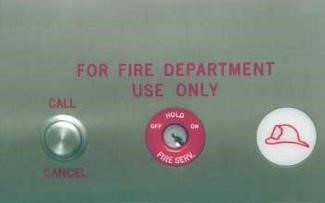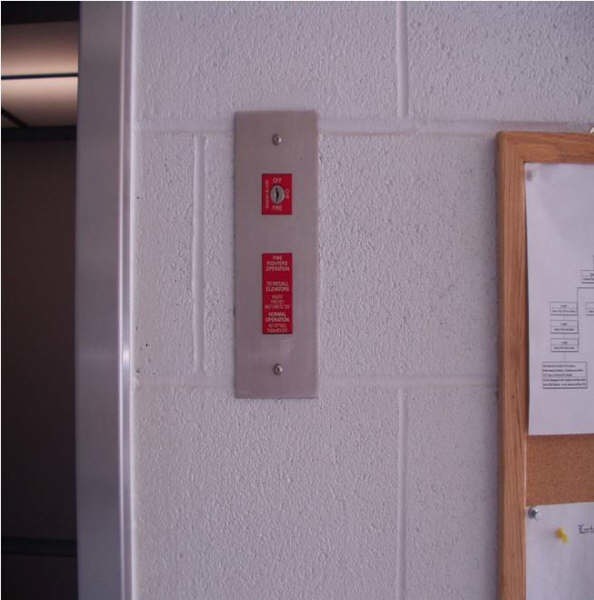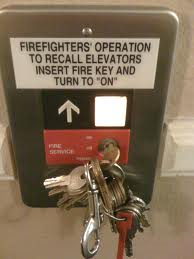By Tony Tricarico
You receive the following transmission: “Attention Engine 1, Ladder 5, Battalion 2: Respond to a report of people trapped in an elevator at the following location _____.”
As you board the apparatus, you start your size-up. You have been in this building before–12 stories, three elevator banks, a state-owned cluster of buildings that are not well-maintained.
We have all been there. Is this an emergency or an incident? Are the people inside injured? Panicking? Freaking out!? The truth is, you can’t do anything–except visualize the environment into which you are walking–until you get there.
On arrival at the complex, there is no evidence of an emergency. People are just walking around, enjoying the day as if they haven’t a care in the world. But, as you approach the building, you can hear the elevator alarm sounding. As the lieutenant, your first order is to your member assigned to the roof position. Although this member has been here before, you want to ensure that the operation is going to run as you plan. Therefore, you instruct him to initiate Phase 1, Firefighters’ Service. ( I refer to the “Firefighters’ Service” key switch in this article, but there are many types of switches out there, including Fire Operation, Fireman’s, and Emergency Use switches.) He enters the lobby, pulls out the key on his radio, inserts the key, and turns it to the Firefighters’ service position. Within moments, all of the elevators are in the lobby, the doors are open, and the occupants are freed. The newer members of your team look over to you. One asks, “Hey Loo, how did you know that was going to happen?”
Elevators move hundreds of thousands of people every day without incident. They have been a very reliable mode of transportation for quite some time. But, when something goes wrong, a rescue can be a truly challenging event, and a recovery can be even more challenging. Just the same, an incident like the one described above can be like a slow ground ball if (1) you know how the machine works and (2) you have the ability to manipulate it to your advantage. If you do not understand the machine, this same scenario might have a team using forcible entry tools, hydraulic tools, air bags, and who knows what else to trash the elevator and end up placing it out of service until an elevator company comes in to repair or replace the damaged parts. Throughout this article, I will refer to what I know–the New York City elevator and conveyance codes and the reference standards I have used in my time on the job. Working in the South Bronx in the ’80s and ’90s in an area that had many city-owned buildings, the ladder companies there became quite proficient in the operations, and we had ample opportunity to hone our skills.
Firefighters’ Service
Phase 1
Firefighters’ Service has two phases. In the first phase, elevators are recalled to the lobby or the lowest landing served by that elevator, called the “terminal floor.” If the elevator serves a basement or a subbasement level, that elevator will return to the street floor or lobby floor.
This initial 222, Phase 1, can be activated in two ways—automatic recall and manually. Automatic recall is initiated when a smoke detector on an elevator landing is activated or a water flow from a sprinkler is detected. If Phase 1 was initiated automatically by the activation of a smoke detector or sprinkler water flow, the elevator cannot be returned to normal operation until the smoke detector or water flow alarm has been cleared.
Initiating Phase 1 manually involves using the Firefighters’ Service lobby keyed switch. When the key is placed in the switch, all elevators in that bank will be returned to the street lobby or terminal floor. Regardless of which method is used to initiate Phase 1, the elevators will behave in the same manner.
An elevator traveling away from its lowest landing floor will reverse direction at the next landing without opening its doors and return non-stop to the street lobby or terminal floor. If any doors are open at any floor, they will immediately close, and the elevator will return non-stop to the street or terminal floor. Door-reopening devices to prevent door closure for power-operated doors, which may be affected by smoke, heat, or flame, shall be rendered inoperative, except the doors mechanically activated by a safety edge in case a person is lying half in and half out of the elevator. The Emergency Stop button will also be rendered inoperative in Phase 1 operations.

(1) Three-position Firefighters’ Operation control switch plate. (Photos by author.)
Phase 1
The Firefighters’ Service control switch plate will have a two- or three-position keyed switch, which will usually be marked “Normal” or “Fireman Service” for a two-position switch and “ON,” “OFF,” and “HOLD” for a three-position switch. When the key switch is in the “Normal” position, Firefighters’Service is off. When you turn the key to “Firefighters’ Service” or “ON,” Phase 1 is activated. There are many variables. It would benefit you to visit the elevators in your district to see how they are marked. After you see what you are dealing with, get keys from an elevator mechanic, and have the mechanic show you how each machine works. As I travel teaching on this subject, I find many variations. They are all somewhat similar, but the differences represent nuances that need to be learned.

(2) Lobby key switch in Phase 1.

(3) The lobby key switch.
Once Phase 1 is activated, when the elevator car reaches the lobby or its terminal floor, one of the following will occur:
• All car and hoistway doors will open. They will remain open for at least eight seconds–no more than one minute–and then close.
• All car and hoistway doors open. The Firefighters’ Service elevator car and hoistway doors remain open with the car lights remaining on. Non-Firefighters’ Service elevator car and hoistway doors will close between eight seconds and one minute after opening.
• All elevator car and hoistway doors open and remain open. The lights in the Firefighters’ Service elevator cars remain on and the lights in the Non-Firefighters’ Service cars go off.
Phase 2
Phase 2 involves operating the elevator car. Once you have chosen your elevator, you can now place the elevator car in “Firefighters’ Service” and use the controls within the car. You may be able to remove your key from the lobby key switch, leaving it in the “Firefighters’ Service” position. If you are unable to remove the key in the lobby from the “Firefighters’ Service” position, use a second key to activate the car. When you enter the car, place the key in the Firefighters’ Service switch, and turn it to the Firefighters’ Service position. You can now remove the key from the lobby key switch. An elevator can be placed into the Firefighters’ Service mode, Phase 2, only at its terminal floor. Once in Firefighters’ Service mode Phase 2, all of the other elevators can be returned to their normal operating mode by turning the Firefighters’ Service switch in the lobby back to “Normal.” You can now choose a floor on the selection panel and press the “Door Close” button. As soon as the car begins to move, press the “Call Cancel” button to verify that it is working properly. You will now do one of two things:
• If the car stops at the next available landing, select the desired floor on the Floor Selection panel, and continue on your mission.
• If the car does not stop at the next available floor, attempt to stop the car by forcing the car doors open. By forcing the doors open, you will be interrupting the interlock relay switch. This will stop the car immediately. Notify command, and initiate emergency evacuation procedures. This car is now out of service.
The Call Cancel button allows the operator to change the floor selection or the direction of travel prior to reaching the original selected floor. When the Call Cancel button is operated, the elevator car stops at the next available floor landing in the direction of travel. The doors will remain closed, and a new floor selection must be made. It is always recommended that you press the Call Cancel button when entering a car on Firefighters’ Service. This clears the floor selection panel of any other floor choices that may have been previously.
If the car is operating normally when you reach the selected floor, press the Door Open button, which is a constant pressure button, which means that it must remain pressed until the door is fully open; otherwise, the door will close on its own. This is a built-in safety feature in case the doors open where there is smoke, heat, or fire. By releasing the Door Open button prior to their being in the full opened position, the doors will automatically and immediately close. A member leaving the elevator car must verify that the doors are fully opened. If the member leaves the car before the doors are fully opened, the door will close behind him. You have now lost that car, and it is out of service. Don’t get caught on the outside of the elevator.
If you release the Door Open button and the door fails to close automatically, press the Door Close button and manually assist the closing of the car doors. If the car doors still fail to close, evacuate the elevator and proceed to the nearest safe stairway. This car is now out of service. When the elevator doors have fully opened, the elevator car will remain at the selected floor, with the doors open. To move from any floor, push the Door Close button and select another floor.
It is recommended that the member who operates an elevator car on Firefighters’ Service be equipped with a radio and forcible entry tools. Two last pointers on elevator operations follow: First, the car responds only to the floor selected by the Floor Selection button in Phase 2. All elevator landing call buttons are no longer recognized, and the elevator will not stop at any floor unless it is selected from inside the car. Second, the Emergency Stop button is rendered inoperative during the Phase 1 operation. This prevents civilians from impeding the operation and ensures that the car will behave as expected—it will go to the terminal floor. In Phase 2, the Emergency Stop button should be operational. Activation of the Emergency Stop button in Phase 2 will quickly stop the elevator car at any point in the hoistway.
These are some of the basics on elevator operations. There are many other types of events that involve elevators and their shafts. If there is a fire on an upper floor and you need to use the elevators for fire operations, the procedures presented here are similar, and you will be using Firefighters’ Service; however, there are additional variables to be considered. A machine will behave as we expect it to under most circumstances. The best way to prepare for these calls is to find out what works for you by drilling. Know your buildings, know your district, know your job.
BIO
TONY TRICARICO has been a member of the fire service since 1977. He is a captain in the Fire Department of New York (FDNY), which he joined in 1981. In 2002, he was assigned to the Special Operations Command and served as the captain of Squad 252 until his retirement at the end of 2008. He is a national and New York State-certified fire instructor and has instructed for the FDNY Technical Rescue School, Command School, and Task Force 1. He is a former deputy chief instructor at the Suffolk County (NY) Fire Academy. He is the technical operations adviser for Gel Tech Solutions. He is an active member of the Mount Sinai (NY) Volunteer Fire Department and a former chief of department.

